#herbal infusion
Explore tagged Tumblr posts
Text
How to make Peanut Coriander Chutney Recipe | Verusenaga Kothimeera Pachadi
Peanut Coriander(Moongphali dhaniya)Chutney Are you looking to spice up your culinary adventures with a burst of flavour? Look no further than the delectable Peanut Coriander(Moongphali dhaniya)Chutney! This versatile condiment combines the rich, nutty goodness of peanuts with the vibrant freshness of coriander, creating a symphony of tastes that will elevate your dishes to new heights. Peanut…
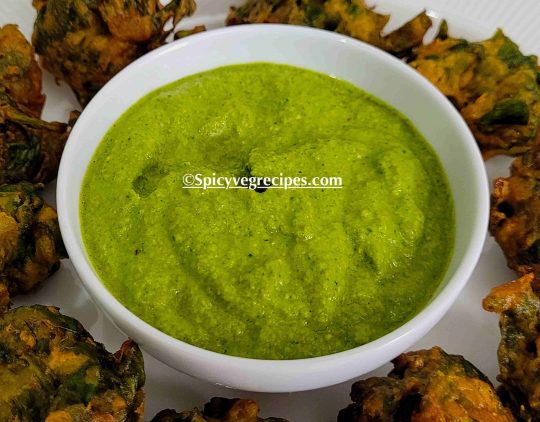
View On WordPress
#Adrak Elachi Chai#Aromatic Tea#Ayurvedic Tea#Chai Latte with Ginger and Cardamom#Chai Tea Blend#Easy Recipes#Flavored Tea#Ginger cardamom tea#Healthy Chai Recipe#healthy recipes#Herbal Infusion#Homemade Chai#Hot Beverage with Ginger and Cardamom#Indian Masala Chai#Indian Spice Infused Tea#Quick Recipes#Refreshing Chai Blend#Regional Indian Cuisine#spiced tea#spicy veg recipes#Tea with Fresh Spices#Tea with Ginger and Cardamom#Traditional Indian Chai#veg recipes#Warm and Soothing Chai#Winter Spice Tea
2 notes
·
View notes
Text
today I unlocked my new favorite herbal infusion combo: jasmine flowers and damiana leaf! so yummy and so good for you, my herbal love potion 💚
#damiana is an ancient aphrodisiac#and has been used for love potions across Central America#Jasmine adds sweetness and sensuality ✨#damiana#Jasmine#herbal healing#herbal medicine#herbal infusion#herbs
4 notes
·
View notes
Text
Experience the power of nature with Herbalinfusion.at herbal infusion blends. Unlock the healing properties of herbs for a healthier you.
Herbal Infusion
0 notes
Text
Herbal Infusions
Throughout history, diverse cultures across the globe have turned to the power of herbal infusions to address a myriad of ailments. From soothing the common cold to easing digestive discomfort, the utilization of botanicals has bridged the gap between nature’s offerings and human well-being. This intrinsic connection between mankind and the earth’s abundant resources is a cornerstone of the herbal heritage we continue to honor.
Herbal Infusion
0 notes
Text
"7 Receips with Skin Collagen Boosting Herbs "
Radiant and youthful skin is a desire shared by many, and one way to achieve this is by incorporating collagen-boosting herbs into your daily routine. Nature has gifted us with an array of herbs that support skin health and stimulate collagen production. Let’s embark on a journey of holistic skincare and discover how to use these collagen-boosting herbs daily for a natural glow. Start Your Day…
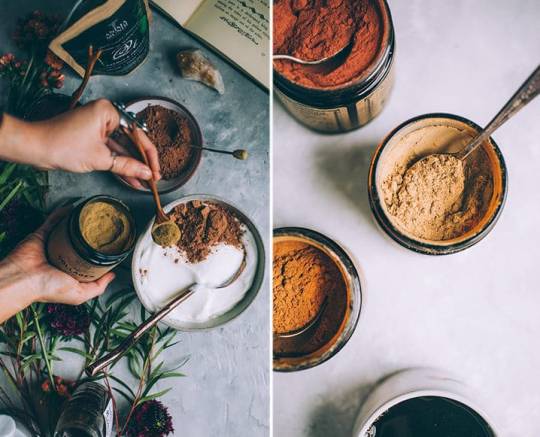
View On WordPress
#amla smoothie#collagen boosting snack#GOTU KOLA#GREEN TEA#herbal infused water#HERBAL INFUSION#herbal salad#hibiscus
0 notes
Text
Discover The Magic of Tea Leaf Reading: A Guide To Tasseomancy
Unlocking the Mystical Art of Reading Tea Leaves for Divination and Insight Welcome to the enchanting world of tasseomancy, the ancient art of tea leaf reading. In this comprehensive guide, we will explore the fascinating practice of interpreting symbols and patterns formed by tea leaves in a teacup. Whether you are a beginner or an experienced practitioner, this guide will provide you with the…
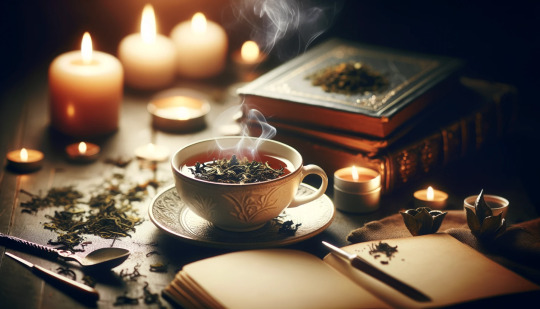
View On WordPress
#ancient divination#art of tea reading#brewing perfect tea#cultural traditions#divination techniques#herbal infusion#holistic spirituality#inner guidance#introspection tool#Intuition Development#intuitive reading#loose-leaf tea#meditation and tea#mindfulness in divination#mystical rituals#mystical tea experience#pattern recognition#personal insight#Psychic Development#reflective tea sessions#self-awareness practice#Spiritual Practices#symbol interpretation#tasseography#tea and intuition#tea ceremony#tea cup readings#tea leaf patterns#tea leaf reading#tea meditation
0 notes
Text
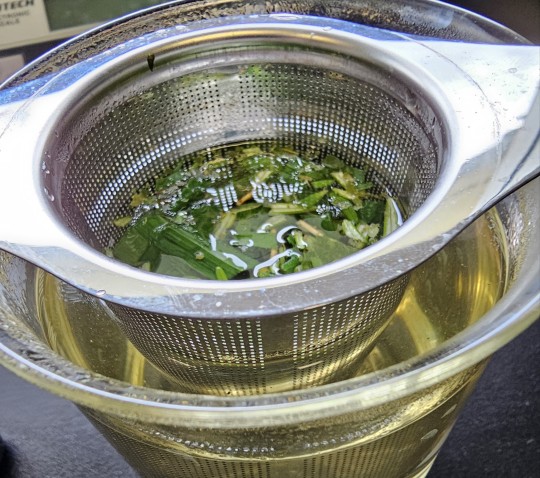
Potent herbal infusion containing Peppermint, Spearmint, Rosemary, Lemongrass and dried Lemon Myrtle
0 notes
Text

This is humpday folks! I'm 48 hours post a tooth extraction, and sipping on herbal bitters to ensure my immune system is up and running, and of course to aid in the healing process.
I made a couple of 32-ounce jar infusions with combinations of elderberries, cloves, and pau d'arco — 2 tablespoons of each. I ground my cloves down a bit.
Here's to healing!
#herbs#herbal remedies#herbalist#earth medicine#preventive medicine#cloves#elderberries#pau d arco#immune booster#immunity support#antiinflammatory#natural medicine#health#healing#health and wellness#supplement#herbal infusion#herbal tea#sipping tea#tea#tumblr#artists on tumblr#wednesday#umi ananda
0 notes
Text
by the way
infusing oil with raw garlic is a breeding ground for botulism
stay safe, folks.
46 notes
·
View notes
Text
What are Infused Oils?
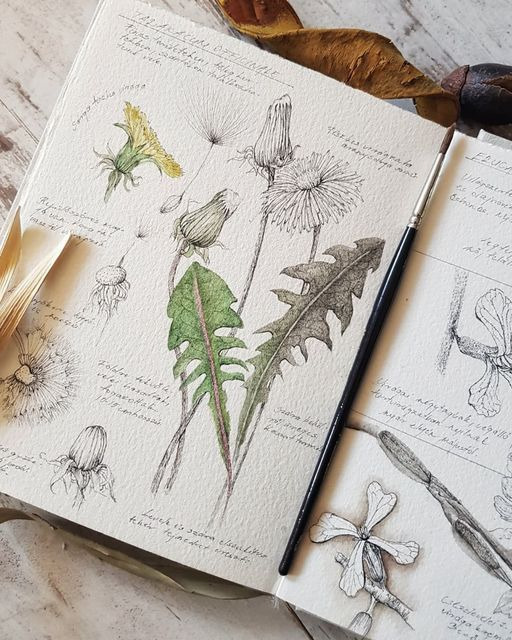
What are they?
Infused oils are herbal components or spices placed in a jar of carrier oil like Olive Oil, Grapeseed Oil, Avacado Oil, Jojoba Oil, Coconut Oil, etc. Can be used in cooking, herbal ailments and skincare.
Are they essential oils?
No. Short answer, no. Long answer? I'll give you an explanation. Essential oils are distilled using Steam Distillation, Solvent Extraction, CO2 Extraction, Maceration, Enfleurage, Cold Press Extraction, and or Water Distillation. Lotta words huh? It takes a lot of work to make essential oils. Unfortunately, it also takes quite a bit of that plant to make even those tiny 10ml bottles you purchase. Of course, each plant varies. However, it still can lead to a larger environmental impact.
For instance, one pound of essential oil can be extracted from approximately 250 pounds of rosemary leaves, or from 150 pounds of lavender buds, or say 50 pounds of eucalyptus leaves. This is why you see some as more expensive than others. Unfortunately, you can see where the problem lies in plants that are more threatened or endangered. If you must use essential oils, source responsibly (and not from a Pyramid scheme but I'm not opening that can of worms)
Can I use infused oils in my practice?
Yes! Absolutely! All these oil recipes you see for spell oils are exactly that. You can even use the elemental correspondences of the carrier oils you use for spell oils. As an example Olive Oil is traditionally known for the fire element and Coconut Oil is water. The possibilities for your personal correspondence are endless!
Now I'll stop rambling. Here are a few methods I learned to infuse oils in my courses and through self-herbalist study.
Method One:
The Folk Method - The most common
Directions
Place DRIED herbs in a clean, dry jar. Leave at least 1 to 3 inches of open space above your herbs to cover with oil.
Fill the remaining space in the jar with the oil of your choice, making sure to cover herbs by at least 1 inch or more. If the herbs emerge above the surface of the oil at any point while infusing, pour more oil on top to ensure the herbs remain covered.
Cap the jar tightly and shake well.
Place the jar in a sunny, warm windowsill and shake once or more per day.
After 2 to 3 weeks, strain the herbs out of the oil using cheesecloth or a mesh strainer. Or you can leave it in but straining is recommended if you are using dropper bottles as it clogs the caps.
Pour into clean glass bottles.
Remember to label your jars with the date, type of oil, and herbs used! You WILL forget! Trust me.
Store in a cool, dark place. The oil may keep for up to a year.
Method Two:
The Heat Infused Method - Quick Infusion
Directions
Place herbs in the crock pot or double boiler. Cover with extra virgin olive oil (or other carrier oil of choice), leaving at least an inch or two of oil above the herbs.
Gently heat the herbs over very low heat (preferably between 100° and 140° F for 1 to 5 hours, until the oil takes on the colour and scent of the herb. Some recommend heating the oil for 48 to 72 hours at a controlled temperature of 100° F. Turn off the heat and allow it to cool. I personally prefer letting it sit in a crock pot for 72 hours as I feel like I get all of the benefits out of the herb.
Once oil is cooled, strain using cheesecloth.
Bottle in dry, sterilized glass bottles. LABEL your bottles with the date and contents before storing them.
Store in a cool, dark, dry place for up to six months.
Best herbs to infuse in oil
There are a countless number of herbs, spices and resins that can be infused into the oil. Please make sure these herbs are free from pesticides and chemicals (not found on the roadside). Dried herbs work best as you don't want your mixture spoiling sooner. Here are some great examples of herbs to use.
Pine needles
Calendula flowers
Chamomile flowers
Lavender
Lemon balm
Peppermint leaf
Rosemary leaf
Thyme leaf
There you have it! Now have fun and source responsibility.
Happy witching!
Want to read more?
On sustainability and impact:
Links:
Dangers of essential oils and pets:
Link:
Want to check out my other post? Look at my Masterpost
#witchcraft#witch#infused oils#spell oils#essential oils#aromatherapy#kitchen witchcraft#herbal magic#herbalism#herbalist#herbal medicine#witchblr
106 notes
·
View notes
Text
When allergies start to hit, like today, I usually add a pinch of cayenne pepper to my food as a nasal decongestant, and use my garlic infused honey to soothe my sore throat caused by post nasal drip.
The honey can be taken alone or mixed into an herbal tea. (It's recommended that you eat the garlic cloves, particularly when you have a cold, but it's not 100% necessary if you don't want to.)
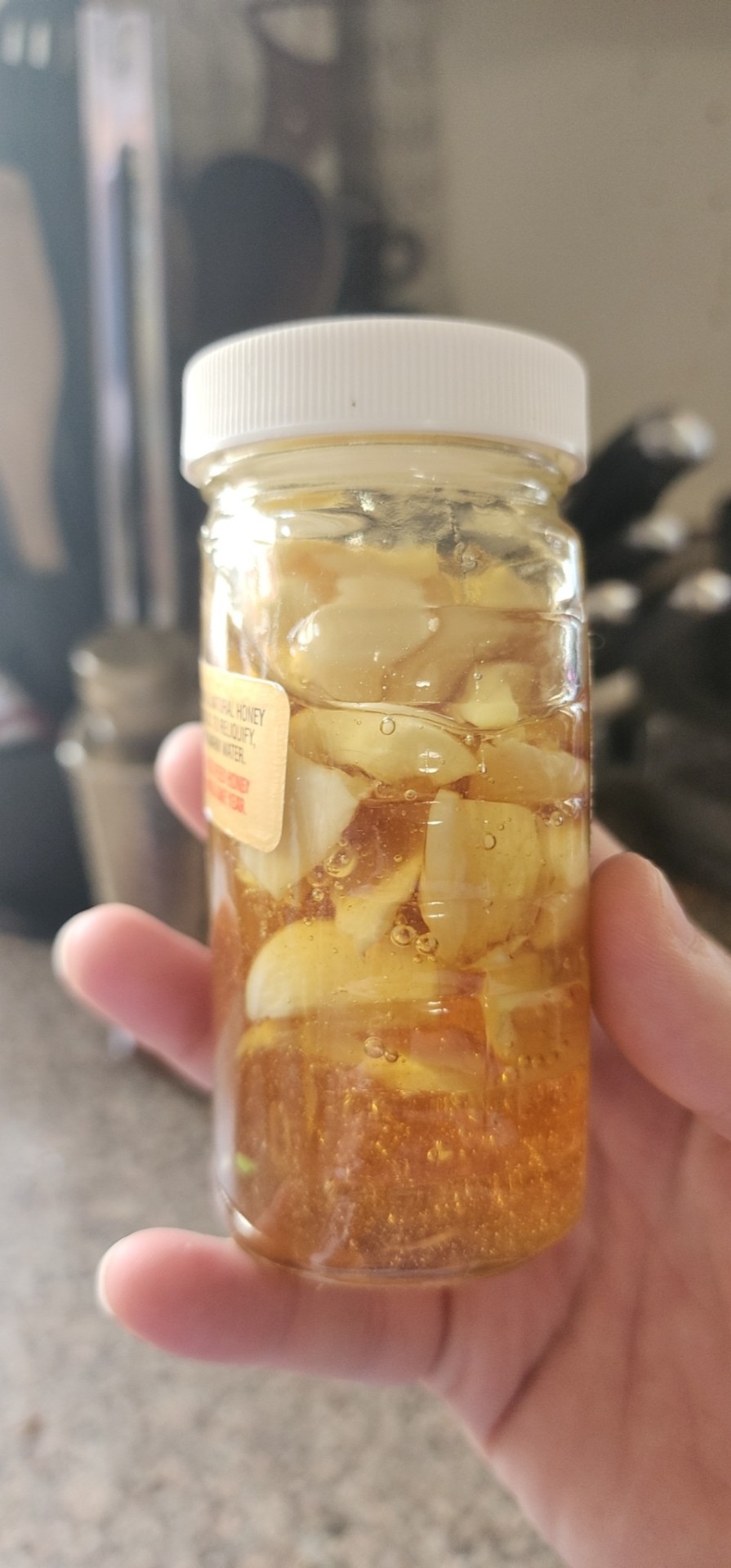
Garlic Infused Honey Recipe
1 clean and dry jar with lid
1 head of garlic, peeled and crushed or minced
Honey
I hate mincing garlic, so I usually just crush it with the flat side of my knife and add it to the jar. A garlic press can also be used.
Add enough honey to cover the garlic.
Screw the lid on tight and store it in a dark, cool place. Mix the honey once a day (I usually just turn the jar upside down).
Should be ready to use in a few days. Honey will be thin and amber in color.
Use to soothe sore throat caused by cough, illness, or allergies.
#kitchen magic#kitchen witch#herbalism#herbal magick#home remedies#honey#garlic#garlic infused honey#recipes#sore throat remedy#witchblr#witchcraft#witch#witchy#witchy things#witchcraft community#witch community#paganlife
44 notes
·
View notes
Text
Lemon Ginger Infused Honey | Clover’s Cookbook
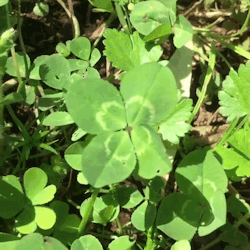
Hey everyone, it’s Clover here and this is the Lemon Ginger Honey Infusion!
Originally, this recipe was passed down to me through my mom who learned it from my paternal grandmother. We found around the time I was in third or fourth grade that over the counter medicine was starting to lose effect on me, so my grandma told my mom this recipe to see if it helps. And, to everyone’s relief, it did!
(Although, Mini Clover was not a fan of the taste originally—it’s grown on me immensely.)
My mom needed to tell me that it was “Magic Tea” to get me to drink it. And, after trying Theraflu a year or two later, I agreed that: “yes, it was magic because it was medicine that tasted better than anything else”. Now this infusion is my go-to cold cure.
(I also drank almost half of my batch that I made almost a year and a half ago when I was laid up in bed with the flu in March. That thing is very shelf-stable.)
Without any more preamble, here’s the recipe!
What you will need:

An airtight container
Fresh Lemons, I usually use three or four but it depends on the size of the container.
Fresh Ginger, I usually use a handful of ginger root but it depends on the size of the container.
Honey
How to make it:
1. Rinse and slice the lemons and ginger
You can shred the ginger if you like, but I usually slice it up whenever I use it. Shredding ginger takes a lot of time that I personally do not have—and our grater is a pain to wash.
2. Layer the sliced ginger and lemon on top of each other in the airtight container, getting as close to the top as possible.
I use an empty instant coffee container, if you want ideas for it. It is a bit larger than I need, since I’m the only one in the house that drinks this infusion when I’m sick, but the trade off is that I know it’s airtight and there will be enough for at least a year. You can use mason jars or any other airtight containers you have on hand. The old instant coffee jar is just my suggestion.
3. After layering the lemon and ginger in the airtight container, add the honey. You want to fill the honey all the way to the top of the container if possible. If you can’t, at least so it covers the top layer of the lemon-ginger tower.
You will probably be using all the honey in the bottle, just so you know. When I first did this myself, I was unaware how much honey I needed and had to go out and buy another bottle because the container was bigger than expected. So just a heads up.
4. Seal the airtight container and let sit out overnight then place it in the fridge a month before use.
So I was unaware until recently that, for max potency and a proper infusion of the ingredients, you want your honey infusions to sit for a month before use. I just ended up getting super lucky the past few times I made it because I replenish my infusion when the house runs out, not when I need it right away. So my suggestion is make it in late July or Early August, that way it sits the month and you have it for cold and flu season.
5. Add to your preferred tea when sick and drink it throughout the day. For me, doing this kicks whatever is brewing in my system—and usually works in about a day for the few people I’ve given the infusion to. But take it as long as you think you need it, you’re the only one who knows your body.
Why this works:
Lemon:
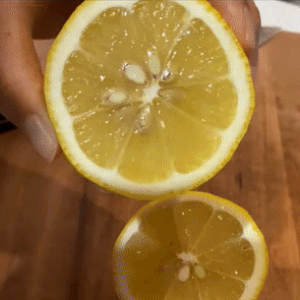
Lemon is high in vitamin C which helps boost the immune system and shorten the duration of colds.
Vitamin C is also helpful to lower your risk of heart disease and stroke (healthline.com), which aren’t important to this cold cure, but good to know anyway.
Hot Lemon Water is also good for sore throats and congestion in a 2008 study, as per medicalnewstoday.
Ginger:
Ginger is good for the gut as it helps settle stomachs, and the bitterness of the root kicks your digestive system into overdrive to clear out what the body considers to be possibly poison due to the taste (any Holistic Herbalism podcast episode where Ginger is involved).
Ginger’s anti inflammatory properties also help reduce pain and inflammation with a sore throat you usually get with a cold, as per this medicalnewstoday article (link here).
Ginger is also antiviral and antibacterial just like lemons are. So it helps get rid of any unwanted viruses or bacteria building up because of the cold, flu, etc.
Important note about ginger—if you or a loved one is on blood thinners don’t take ginger. Ginger’s chemical compounds will have a reaction with your blood thinners and make the blood super thin. This will cause excessive bleeding that is potentially life threatening.
Honey:
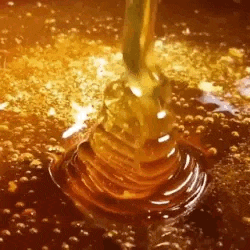
Honey is a natural cough suppressant and throat-soother. It is also antimicrobial. A Harvard Health article (link here) indicated that honey works well for upper respiratory viruses (such as a cold) and some studies observed that taking honey shortened the duration of the cold in some participants.
Conclusion:
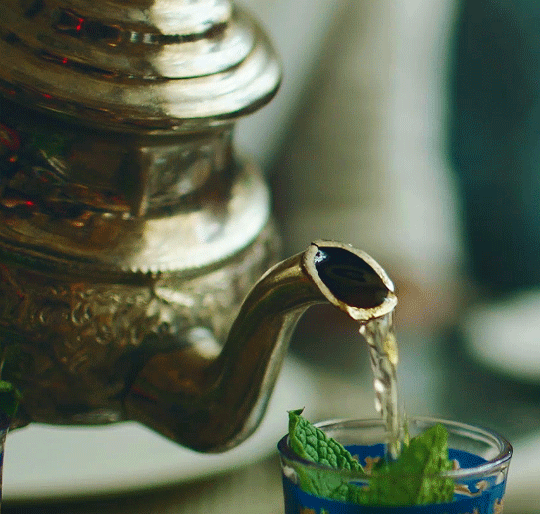
Well that’s it! That’s my Lemon Ginger Honey Infusion that I have with my tea when I’m sick. My preference as a tea pairing with this concoction is usually Moroccan Mint, Peace of Mind Tea, or just normal green tea.
It depends on what we have in the house.
I usually pour it into the tea with the intent of helping me feel better soon as well. Just to add a boost of magick to an already great cold cure.
Have any of you tried this before? Do you have alternatives for this cold cure? If so, tell me!
Thank you all for reading and have a wonderful day!
#clovers kitchen#kitchen witch#honey infusions#ginger lemon honey infusion#recipes#cold cures#witchcraft#herbalremedies#herbalism
19 notes
·
View notes
Text

Fraser Fir Sugar (Vegan)
8 notes
·
View notes
Text
Making a nettle infusion!
You need: dry nettle, a jar, a lid, a butterknife, hot water, and a fridge.
Nettle is once again lush and beautiful so I harvested a bunch (wearing gloves) and left it on the bedsheet for a few days to dry. Nettle already has very low water content so it dries very fast! Once it's crunchy it can no longer sting you, and it's harmless to touch (but don't push your hand in it randomly because stems can still cause some irritation.)
Now, when it's dry, you can grab a bunch, and stuff it inside of a jar, filling about two thirds of it (if your nettle is in smaller pieces then less!).

Once it's in a jar, you pour boiling water over it. Once the water covers all of the nettle, there's going to be a lot of displaced air bubbles inside, so grab a butter knife, and stir it around, the water level will get significantly lower.
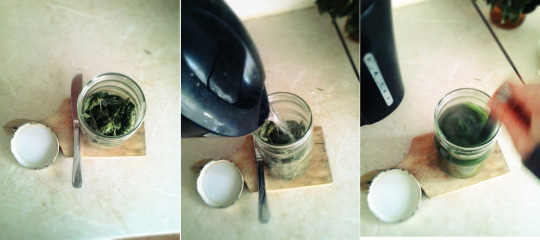
The nettle gets so pretty and green inside. After stirring and freeing all the air bubbles, you fill it up to the very top, and you put the lid on. (If you need to grab onto the jar to close it up, use a cloth to touch it! Hot.)
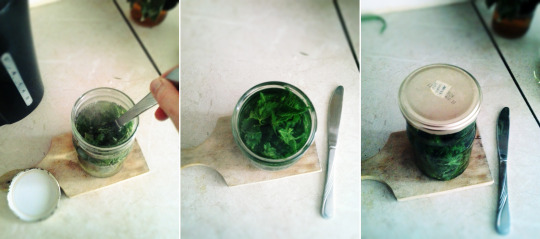
You leave this to cool down, and then leave it in the fridge overnight. The next day, you grab it out of the fridge, strain it into a cup, and that's it!

The color can vary from yellow to black, depending on how much nettle you used, and how long it was left in the fridge. For some people, this will have a taste similar to milk! Sometimes it can feel slightly grassy if it's only been 24 hours since you've made it, but if you leave it half a day longer, it gets to a much sweeter tasting phase.
Now that you know how, why would you make this? Because this is amazing, incredibly helpful herbalist potion-like thing to drink. Firstly, if you're in any way lacking in iron or calcium, this will have your back. I'm using it every day to make sure my calcium levels are good and my bones healthy. It also has immense positive psychological effect on a person, it will regulate your hormones, lower your stress levels, and give you a burst of new energy. First few times I had this, it made me incredibly energetic, and for about a month I was able to get all of my chores done, despite chronic exhaustion. It made me happy and giddy and whatever I was stressed about, now seemed like an easy, do-able task. Forever impressed with this drink! And will never stop making it and drinking it, for as long as nettles are growing.
#nettle infusion#tutorial#diy#herbalism#herbal infusions#magic potion#stress relief#stabilizing moods#energy giving potion#i'm having it almost every day now :))))#its so good
168 notes
·
View notes
